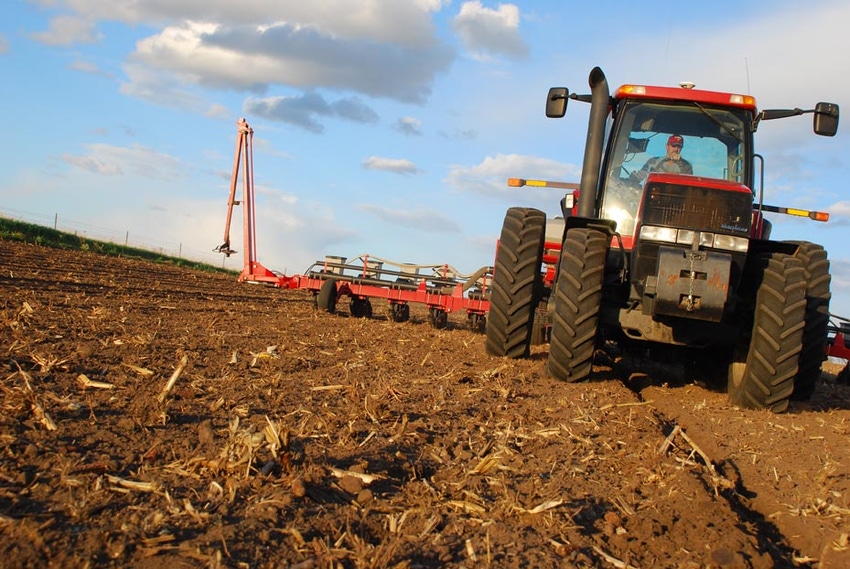Farmers intend to plant more corn and less soybeans, but flooding means all bets are off.
March 29, 2019

Before the massive flooding borne by the bomb cyclone, the nation’s farmers intended to plant 92.8 million acres of corn this year. That would be 4% more (+3.66 million acres) than last year, according to USDA’s Prospective Plantings report issued Friday. That’s more than early estimates presented by USDA at its Outlook Forum; also more than average trade estimates.
Much of the increase comes at the expense of soybean acreage. Farmers intended to plant 84.6 million acres of soybeans, which would be 5% fewer acres (-4.6 million acres) than last year. That’s less than most estimates ahead of the report.
All wheat planted area for 2019 is estimated at 45.8 million acres, down 4% from 2018. This would be the lowest all wheat planted area since records began in 1919, according to the National Agricultural Statistics Service.
Again, this is based on surveys before the massive flooding began.
Acreage shift in flood years
Assessing potential impact of what could be historic flooding, the Livestock Marketing Information Center (LMIC) considered national planting intentions and actual seeded acreage for the last two primary flood years of 2011 and 1993. Analysts remind that in 1993, devastating flooding during the growing season followed spring flooding.
“In 2011, the corn area planted was about 240,000 acres below the prospective indication (down 0.3%), while soybean acreage was down 1.6 million acres (down 2.0%),” say LMIC analysts in the most recent Livestock Monitor. “In 1993, the difference (actual plantings minus prospective survey) was a corn drop of about 3.25 million acres (-4.3%), and a soybean increase of 785,000 acres (up 1.3%)…Note that the balance of this year’s Midwest crops could be different than those years due to relative crop prices, etc.”
Current forecasts suggest flooding this year could be worse.
“The extensive flooding we’ve seen in the past two weeks will continue through May and become more dire and may be exacerbated in the coming weeks as the water flows downstream,” said Ed Clark, director of the National Oceanic and Atmospheric Administration’s (NOAA) National Water Center in Tuscaloosa, Ala.
“This is shaping up to be a potentially unprecedented flood season, with more than 200 million people at risk for flooding in their communities (see “Spring flood outlook…).”
Markets will focus on three areas in order to assess corn and soybean prices, according to LMIC.
First is plantings. Next is the portion of planted acres harvested for grain; LMIC analysts note Midwest flooding could increase planting area abandoned as the growing season unfolds. Finally is the yield per acre.
“In the Midwest, the normal corn planting timeframe in many areas still is over one month away,” say LMIC analysts. “Nationally, compared to the Western Corn Belt (e.g., Nebraska), less attention has been paid to acres that are currently too wet for planting, especially in the Mississippi Delta, where corn planting season has commenced. Fewer acres of corn may be planted in that area than expected just a few weeks ago. In contrast, corn planting in Texas has largely proceeded normally. As planting season progresses, wet soils may cause shifting of some planned corn acreage to soybeans.”
About the Author(s)
You May Also Like





